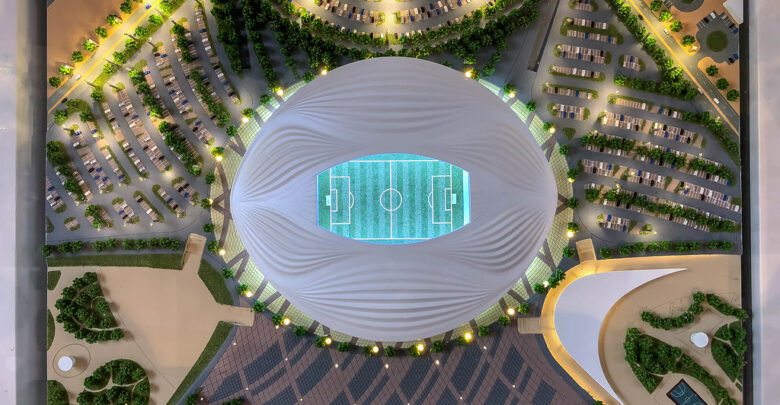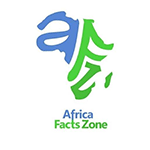Advertisement
The Qatar World Cup stadium are distintive and comprises of designs from wind-filled sails to inspiration from the traditional qahfiya and large shipping containers.
The 2022 Qatar World Cup will not only be the first to take place in the Arab world, but it will also be the most condensed, enabling spectators to watch many matches each day.
Solar-powered cooling equipment is installed in every Qatar World Cup stadium, training facility, and fan zone to maintain a comfortable temperature.
Every Qatar World Cup stadium will be environmentally friendly, and its temperature may be adjusted.
Less than 3 million people call Qatar home, therefore the tournament’s legacy needs to be properly preserved.
To do this, the event’s planners have promised to construct Qatar World Cup stadiums with modular components that can be altered after the competition to provide a lasting legacy for the 2022 FIFA World Cup that extends well beyond Qatar’s national boundaries.
Approximately 170,000 chairs will be disassembled and sent to poor countries after the competition to assist them build their sports infrastructure.
Emerging economies will build up to 22 new stadiums, and after this restructuring, Qatar will have stadiums with 20–25,000 seats that are enough for its domestic entertainment requirements.
Qatar World Cup Stadium for 2022 Qatar world cup
Qatar World Cup Stadium Al Bayt Stadium

| Location |
Al Khor, 35km north of Doha |
| Gross capacity |
68,895 |
| Matches planned |
Opening match and all matches through to the semi-finals |
The Qatar World Cup stadium Al Bayt has 68,895 seats available for spectators.
It is distinctive due to the large tent construction that covers the whole stadium and bears the name bayt al Sha’ar, which refers to the traditional tents used by nomadic peoples in Qatar and the Gulf area.
The stadium’s architecture reflects Qatar’s history and present while serving as an example of sustainable development.
After the competition, Al Bayt will only have 32,000 tickets available.
Qatar World Cup Stadium Ahmad Bin Ali

| Location |
Umm Al Afaei, 20km west of central Doha |
| Gross capacity |
45,032 |
| Matches planned |
Group matches, round of 16 |
In preparation for the 2022 FIFA World Cup, the Ahmad bin Ali Qatar World Cup stadium in Umm Al Afaei, west of downtown Doha, will accommodate 45,032 spectators using modular components constructing an upper tier.
Following the competition, it will be reduced in size to little under 20,000 seats.
The stadium’s design and that of the nearby structures are a reflection of Qatar’s surroundings.
Its striking geometric forms evoke the splendor of the desert and the surrounding flora and animals, while its outside facade is made up of ripples of sand dunes.
Qatar World Cup Stadium Al Janoub Stadium

| Location |
Al Wakrah, 22km south of central Doha |
| Gross capacity |
44,325 |
| Matches planned |
Group matches and round of 16 |
Al Wakrah, a city in the south, is home to Al Janoub Stadium.
It can accommodate 44,325.
The wind-filled sails of Qatar’s traditional dhow boats are reflected in the stadium’s architecture as a nod to Al Wakrah’s former pearl-diving and fishing operations.
After the competition, the Qatar World Cup stadium Al Janoub seating capacity will be lowered, and seats will be donated to other international athletic endeavors.
Khalifa International Stadium

| Location |
Aspire, 5km west of central Doha |
| Gross capacity |
45,857 |
| Matches planned |
Group matches, round of 16, and play off for third place game |
Originally constructed in 1976, the rebuilt Khalifa International Stadium was refurbished and enlarged in 2005 to serve as the focal point of the 2006 Asian Games, which were hosted by Qatar.
The Qatar World Cup stadium is the focal point of Aspire Zone, a sports complex that also houses Aspire Academy, Hamad Aquatic Center, Aspetar Orthopaedic and Sports Medicine Hospital, and several other athletic venues.
The stadium has sweeping arcs and partially covered stands.
The 3-2-1 Qatar Olympic and Sports Museum is connected to the stadium by a walkway, which adds to the understanding of how this location values its past while preparing for a vibrant future.
Education City Stadium

| Location |
Education City in Al Rayyan, 7km north-west of central Doha |
| Gross capacity |
44,667 |
| Matches planned |
Group matches, round of 16 and quarter-finals |
At Education City, Qatar’s international center of excellence, the new Education City Stadium is situated close to a number of top-notch university campuses.
The stadium, which has a capacity of 44,667 people, is shaped like a ragged diamond and shines when the sun crosses the sky.
Nearly half of the stadium’s seats will remain after the FIFA World Cup for usage by collegiate athletic teams.
Lusail Stadium

| Location |
Lusail, 20km north of central Doha |
| Gross capacity |
88,966 |
| Matches planned |
All matches through to the final match |
The new Lusail Qatar World Cup stadium, which is one of Qatar’s main stadiums and is situated in Lusail City, will play home to the 2022 World Cup’s closing ceremony.
As part of Qatar’s commitment to sustainable development, Lusail Stadium will be turned into a community center including schools, shops, cafés, sports facilities, and medical clinics after the competition.
974 Stadium

| Location |
Ras Abu Aboud, 10km east of central Doha |
| Gross capacity |
44,089 |
| Matches planned |
Group matches and round of 16 |
A groundbreaking initiative in the field of building sports stadiums is the 974 Stadium.
This stadium, which was constructed entirely out of shipping containers, will be fully destroyed, and the building components will be reused.
The name of the Qatar World Cup stadium is derived from the quantity of shipping containers used in its construction, with 974 serving as both the country code and area code for Qatar.
The stadium overlooks the Gulf Coast and the amazing view of the West Bay skyscrapers and is only a short distance from Hamad International Airport.
Al Thumama Stadium

| Location |
Al Thumama, 12km south of central Doha |
| Gross capacity |
44,400 |
| Matches planned |
Group matches, round of 16, and quarter finals |
Due to its inspiration from the traditional qahfiya (the hat worn below the Ghutra and Egal) in the Arab world, Al Thumama Qatar World Cup stadium is a distinctive example of Arab architectural iconography.
Because it is a feature of Arab culture throughout the Arab world, this design was chosen.
As a result, it conveys the richness of Arab civilisation and the interconnected cultural and historical history of the Arab nations.
The stadium can hold 44,400 spectators, however that number will drop to 20,000 following the competition.














